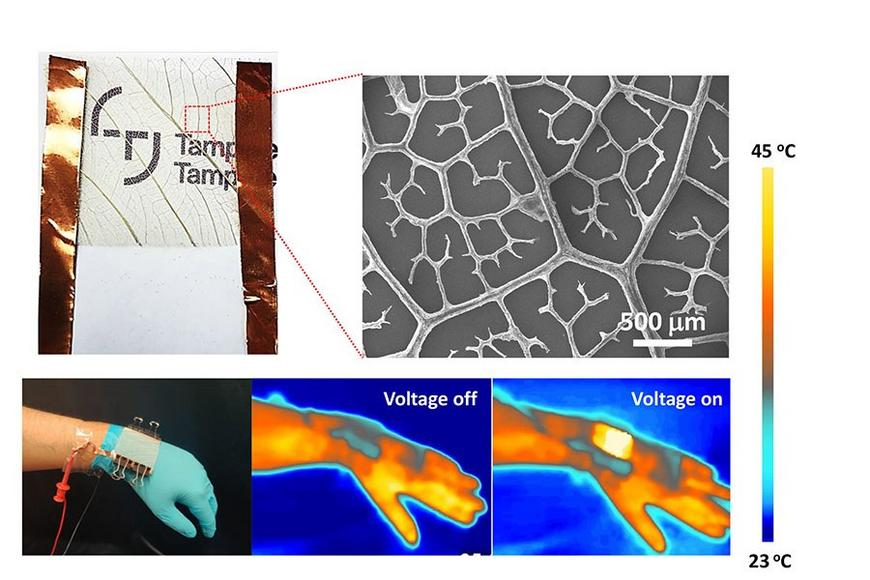Oct 16 2020
At Tampere University, a research team has developed a transparent, flexible, biodegradable, and fast-acting thermotherapy patch from plant leaves.

Image Credit: Tampere University.
The new patch is compatible with flexible electronic applications and has been made with plant material to minimize the amount of electronic waste.
The team made use of leaves from a Bodhi tree (Ficus religiosa). The leaves’ veins have a fractal pattern that makes the surface highly shearable and flexible. Silver nanowires were fixed to the leaf skeleton, and a biodegradable transparent tape was used to encapsulate the surface.
Moreover, the fractal-based design can be used in flexible electronic applications, as it resolves the restrictions of traditional planar designs by optimizing the surface area at the microscale, or more particularly, maximizing the surface area to volume ratio through easy scaling.
The huge surface area allows effective heat transfer, enabling a quick response time and avoiding overheating. Thanks to the even heating and flexible structure of the patch, it can also be fixed to moving joints.
Medical thermotherapy pads are generally utilized in orthopedics to decrease pain, enhance blood circulation, and reduce inflammation. They are even used to treat arthritis, cervical spondylosis, stiff joints, as well as physical injuries.
It is well known that conventional thermotherapy pads cause burns, primarily in old people who may not be very sensitive to heat or among people who fall asleep with their heating pads on. Part of the issue is that commercial heating pads tend to be opaque, and users would not be able to see how their skin is responding to the therapy.
The new thermotherapy patch is made completely of plant-based materials, and thus, it can help decrease electronic waste as well as carbon footprints. All the materials employed in the fabrication process are cost-effective, environmentally friendly, easy to fabricate, and simple to access.
Electronic waste is a growing environmental problem worldwide. The use of biotic architectures and materials can help in the design of next-generation flexible electronic devices while also addressing e-waste problem.
Vipul Sharma, Postdoctoral Researcher, Tampere University
Sharma was appointed by the Academy of Finland and works in the Bioinspired Materials and Robotics group, which is part of the BioMediTech institute of the Faculty of Medicine and Health Technology at Tampere Univesity. The research team is led by Academy Research Fellow Veikko Sariola.
Electronics, particularly flexible electronics, are highly combined with textiles, wellness trackers, medical devices, and other portable devices, apart from other things.
Also, the idea can be applied in numerous applications like sensors, wearable devices, industrial heat systems, defogging or defrosting, microfluidic chips, and thermochromic displays.
Journal Reference:
Sharma, V., et al. (2020) Flexible biodegradable transparent heaters based on fractal-like leaf skeletons. npj Flexible Electronics. doi.org/10.1038/s41528-020-00091-8.